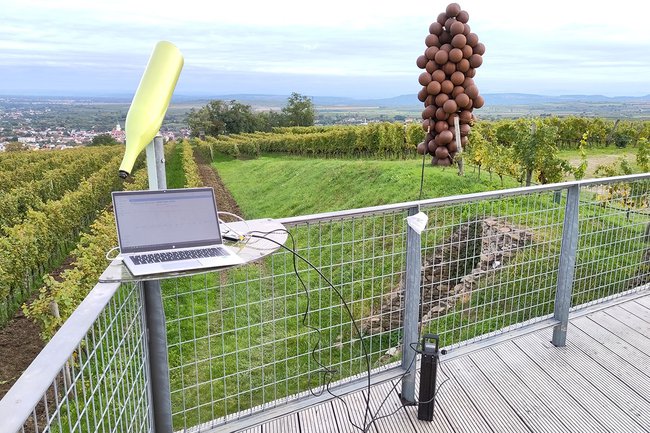Greater Range for Wireless Sensors
St. Pölten UAS Project Explores Possible Applications in Smart Homes and Industry

Smart homes – in other words, houses equipped with assistive technology – use a multitude of sensors for different tasks. However, some intended functions fail due to insufficient range of the wireless sensors used. A research project of the St. Pölten University of Applied Sciences works on a technology to increase their range.
In smart homes, motion and temperature sensors take over a number of tasks such as controlling devices and informing their owners. However, commonly used wireless sensors have only limited range, which prevents them from being used everywhere.
Use in Homes and Vineyards
Henri Ruotsalainen from the Institute of IT Security Research at the St. Pölten UAS is currently working on a method to increase the range of sensors. “There is presently no practicable technology for use cases that require data to be transmitted wirelessly from several locally installed sensors over greater distances. In our project LoRaBridge, we are developing a data bridge to send data from local sensors to a server over greater distances”, says Ruotsalainen.
One of the target groups is private persons who would like to install sensors or smart home components in their basement, attic, or garden – but cannot because the range of the radio connection is too low to retrieve data over such distances.
Ruotsalainen has extensively tested the technology both inside a large office building and out of doors: “Our measuring campaign in Langenlois has shown that these cost-effective sensors can also be used to detect frost in vineyards.”
Use in the Industry
“The lack of chips is our biggest problem at the moment. Hardware tends to be expensive. With the help of our solution, we can transform cheap sensors with low range into long-range ones”, explains the researcher.
Applications in the industry are conceivable as well. To this end, Ruotsalainen is planning to examine and further develop the technology using other sensors and third-party suppliers. Examples of potential use cases are filling level detection in garbage bins, monitoring of parking lots, and the early detection of forest fires.
“Our data bridges pay attention to security, flexibility, and modular application and can be adjusted to different needs. The open source technology is available to everyone interested”, says Ruotsalainen.
The project is funded by the initiative NetIdee.

Dipl.-Ing. Dr. Henri Ruotsalainen
Researcher Department of Computer Science and Security
Mag. Mark Hammer
Section Head PressMarketing and Communications